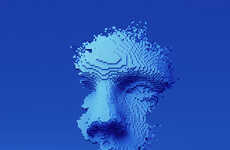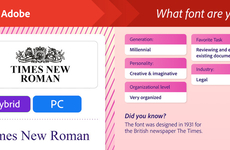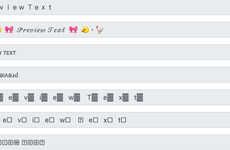
The 'ZXX' Font Was Built to Defeat NSA Robot Eyes
Alexander Lam — June 26, 2013 — Art & Design
References: blogs.walkerart.org & motherboard.vice
In the wake of NSA surveillance allegations, designer Sang Mun created the 'ZXX' font to trick surveillance robots. ZXX was built to subvert text-recognition software and make it unable to read your secret text. As a result, your correspondences stay safe from prying robot eyes.
The font works to thwart readers by employing Captcha-esque strategies. Each letter is disguised through extraneous noise that software has difficulty interpreting.
The secure typeface was named after the Library of Congress's label for books with "no linguistic content." Though the font is available for free and could be used, Sang created the project as art. Using the ZXX typeface itself is not a very effective text encryption strategy since the fonts are readily available and computers can adapt.
The font works to thwart readers by employing Captcha-esque strategies. Each letter is disguised through extraneous noise that software has difficulty interpreting.
The secure typeface was named after the Library of Congress's label for books with "no linguistic content." Though the font is available for free and could be used, Sang created the project as art. Using the ZXX typeface itself is not a very effective text encryption strategy since the fonts are readily available and computers can adapt.
Trend Themes
1. Surveillance-thwarting Typography - Typography designed to subvert text-recognition software and to protect private information.
2. Captcha Typography - Design strategy that employs extraneous noise to make text unreadable by software.
3. Art as Tech Solution - Use of artistic design solutions to address technological threats.
Industry Implications
1. Cybersecurity - Technology that confronts cyber threats from software surveillance and hacking.
2. Graphic Design - New strategies for typography design to address current privacy risks.
3. Art and Design - Application of design thinking to address privacy risks in modern technology.
2.5
Score
Popularity
Activity
Freshness























